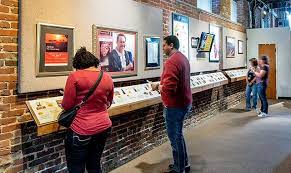Colorado Railroad Museum
The Colorado Railroad Museum is a non-profit railroad museum located near Golden, Colorado, in the United States. Quill Bot will rewrite your text. Start writing or pasting something here, and then press the Paraphrase button.
Synopsis
The museum has one of the most extensive collections of 3-foot (914mm) narrow-gauge railcars in North America, and visitors can ride narrow-gauge trains at events. The museum was founded in 1959 to record and preserve the glorious era of Colorado railroads, particularly the pioneering narrow-gauge mountain railroads, for future generations. There are 12 steam locomotives and over 80 rail cars on the property. He also writes and publishes books and maps about North America's railroads and Rocky Mountain regions.
The main Museum building, completed in 1959, is model led after a small town railroad depot from the 1880s. Wide eaves protect waiting passengers from the elements, and large bay windows allow the station agent to monitor activity on the boarding platforms. The yellow and brown paint are standard Denver & Rio Grande Railroad building colors. The Depot Museum houses the museum's two changing gallery spaces, which feature the colorful stories of Colorado's railroads over the last 125 years. Guests can watch introductory videos to the museum in the upper gallery and participate in hands-on activities in the lower gallery.
COLLECTIONS AND LIBRARY
The Robert W. Richardson Railroad Library, which opened in 1997, is one of the most comprehensive railroad reference libraries in the United States. It contains a wealth of railroad information, ranging from timetables to employee records, photographs to engineering documents, maps to books. The railroads of Colorado and the Rocky Mountain region are the focus of the collections. The Library is open to Museum visitors. Customers can also write, call, or email the Library with questions or for more information.


















































.jpg)